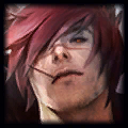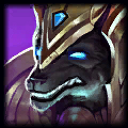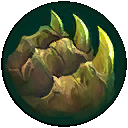

VS

Author
Sett vs Nasus Top Lane Matchup Guide (High Elo)
Runes
Recommended rune sets for this champion

Precision














Resolve






Starter items
Recommended starter items for this champion

Doran's Blade

Health Potion
Main build
Main build for this champion

Stridebreaker
→

Sterak's Gage
→

Overlord's Bloodmail
Spell order
Recommended order for spells

Facebreaker(E)
1
2
3
4
5
6
7
8
9
10
11
12
13
14
15
16
17
18

Knuckle Down(Q)
1
2
3
4
5
6
7
8
9
10
11
12
13
14
15
16
17
18

Haymaker(W)
1
2
3
4
5
6
7
8
9
10
11
12
13
14
15
16
17
18

The Show Stopper(R)
1
2
3
4
5
6
7
8
9
10
11
12
13
14
15
16
17
18
Summoner spells
Recommended summoner spells for this champion

Flash
Teleports your champion a short distance toward your cursor's location.

Teleport
After a brief channel, become untargetable and travel to an allied unit. Upgrades into Unleashed Teleport, which significantly increases travel speed.
Pro tips
- Wave control and freezing are more important than chasing solo kills—deny Nasus farm and stacks at all costs.
- Never proxy farm or permapush against Nasus; it gives him free stacks and undermines your advantage.
- Use Sett’s E on both Nasus and minions for guaranteed stuns, especially when threatening dives.
- Time all-ins around Nasus’s ultimate and Wither cooldowns, and only commit when you have a clear advantage.
- Build Blade of the Ruined King and Stridebreaker early to maximize dueling and stickiness against Nasus.
- In late game teamfights, use Sett’s ultimate to peel Nasus off your carries rather than trying to 1v1 him.
Guides
Introduction
In high-elo League of Legends, where every interaction is calculated and every mistake amplified, the Sett versus Nasus matchup in the top lane is a classic illustration of a lane bully meeting a scaling juggernaut. But unlike some scaling matchups, Nasus is particularly vulnerable to early aggression and wave manipulation, creating an environment where Sett can exert near-total control—if piloted with discipline and precision. This guide explores the critical dynamics, subtle timings, and mechanical nuances that define this lane, offering a roadmap for Sett players to not only win, but to utterly starve their opponent of relevance.
Core Matchup Principle: Starvation Over Kills
The first and most fundamental principle to internalize is that Sett’s power in this matchup is not merely about securing solo kills—though they are certainly possible and often likely—but about suffocating Nasus’s ability to stack his Siphoning Strike (Q) and accrue meaningful gold and experience. In high-elo play, every minion Nasus claims is a small victory for him and a lost opportunity for Sett to press his advantage. The key lies in wave control: through proper freezing and wave management, Sett transforms the lane into a kill zone where Nasus is forced to expose himself for scraps of farm, inviting punishment each time.
Level 1-3: Early Aggression and Trading Patterns
The opening levels are a study in raw aggression. Most Nasus players will take Spirit Fire (E) at level one, both to harass and to secure a few safe last-hits, but this does little to deter Sett’s brute force. Should the Nasus player risk starting with Q to stack early, Sett’s superior base stats and Conqueror-empowered trading pattern allow him to punish mercilessly. Early trades revolve around Sett’s auto attacks, Facebreaker (E), and Haymaker (W)—with the core pattern being auto > E > auto > Q > Q, weaving in as many hits as possible to stack Conqueror and maximize grit for a potent W. The attack speed and adaptive force from runes further boost this early dominance.
Wave Management and Dive Threats
Sett’s ideal approach is to slow-push the first two waves, building a larger wave that crashes under Nasus’s turret on the third wave. This opens a crucial window: if Nasus has taken poor trades or been careless with his health, Sett can threaten a dive—especially if Ignite is available. Sett’s E, when used on both Nasus and minions, guarantees a stun and sets up an inescapable W, often forcing Nasus’s Flash or resulting in a kill. The important mechanical detail here is to buffer E and W while tanking a single turret shot—ensuring Nasus cannot simply retreat with Flash before the true damage lands.
Freezing and Denial: The Central Pillar
Should the kill not materialize, crashing the third wave and recalling is still a victory. Sett can return to lane with a material advantage in items and health, setting up a freeze near his own turret. This is the central pillar of the matchup: a maintained freeze with more enemy minions than friendly ones, anchored just outside Sett’s turret range. In this state, Nasus is forced to walk up dangerously far for farm, each attempt telegraphing his intent and allowing Sett to punish with E > Q > Q combos, or simply zone him off experience. Attempting to proxy farm (clearing the wave behind Nasus’s turret) is strictly inadvisable; it grants Nasus free stacks and undermines Sett’s leverage. The goal is relentless, methodical starvation.
Level 6: All-in Windows and Ultimate Usage
The tension escalates as both champions approach level six. Nasus’s Fury of the Sands is a powerful deterrent to all-ins, but only if he’s at reasonable health and can endure sustained combat. In reality, if Sett has maintained his freeze and health advantage, he can often force a kill even through Nasus’s ultimate, particularly with Ignite in tow. The trick is to whittle Nasus down with short, repeated trades, and then commit to an all-in when Nasus is below sixty percent health. Maximizing grit before unleashing W is essential, as it represents a significant chunk of burst damage that Nasus cannot lifesteal through. Sett’s ultimate serves as both a gap-closer and an execution tool, ideally used to finish off the kill after Nasus has exhausted his cooldowns.
Itemization and Runes
Itemization further tilts the matchup in Sett’s favor. Early acquisition of Blade of the Ruined King is particularly punishing, amplifying Sett’s dueling and stickiness while shredding Nasus’s health. Stridebreaker offers gap-closing and chase potential, critical for keeping up with Nasus when he attempts to disengage with Wither. Core survivability and damage are rounded out with Black Cleaver, Overlord's Bloodmail, and Sterak’s Gage, ensuring Sett maintains both the raw stats and utility needed to dominate extended skirmishes or survive turret dives. Runes like Second Wind and the health scaling shard cushion any poke from Nasus’s E, making Sett nearly impossible to whittle down in the long run.
Mid Game: Maintaining the Lead
As the game transitions into mid game, the dynamic shifts subtly. Nasus, if he survives the onslaught and completes his first major items—often Trinity Force and Frozen Heart—becomes considerably harder to kill. His Wither now cripples Sett’s attack speed, and his tankiness allows him to absorb more damage. However, if Sett has executed the early plan, he should be ahead by one or two levels and an item or two, preserving his dueling edge. It becomes even more critical to time all-ins around the cooldowns of both Nasus’s ultimate and Wither; Sett should seek fights when he has a clear stat and item advantage, and when Nasus’s ultimate is unavailable or his health is already chipped away.
Side Lane Play and Mechanical Nuances
In the side lane, the pattern remains: force Nasus to overextend for farm, punish with repeated short trades, and commit to all-ins only with a significant resource advantage. Sett’s E remains a potent zoning threat, and his W can break through even high armor values if fully charged. The key mechanical nuance is in timing—using Stridebreaker or Blade of the Ruined King’s active to stick to Nasus, landing E to prevent disengage, and unleashing W when Nasus is committed and cannot kite away. Sett’s ultimate can be held as an escape or as a finisher, depending on how the fight unfolds.
Post-Laning Phase: Avoiding Mistakes
It is critical to avoid the temptation to proxy farm or permapush post-laning phase. Doing so relieves pressure on Nasus and allows him to farm safely under turret, accelerating his scaling and undermining the early advantage Sett has worked so hard to build. Instead, Sett should continue to freeze or slow push, always threatening the all-in and maintaining vision control to avoid jungle interference. Teleport can be used to influence the map, but only after ensuring that Nasus remains underfed and behind in stacks.
Late Game: Teamfighting and Role Shift
As the game enters its later stages, Sett’s direct influence over Nasus begins to wane. Should the matchup reach this point, with Nasus stacking freely and joining teamfights with thousands of bonus health and immense Q damage, Sett’s role pivots. In teamfights, Sett should look to use The Show Stopper (R) to peel Nasus off his carries, often ulting him into his own team for maximum disruption and follow-up E > W combos. The days of 1v1 dominance are largely over; Sett’s value is now in crowd control, disruption, and soaking damage.
Conclusion
In summary, the Sett versus Nasus matchup at high-elo is a masterclass in wave management, calculated aggression, and mechanical precision. Sett’s path to victory is forged in the early game: through unrelenting pressure, surgical trading, and ironclad freezing, he can deny Nasus the very resources he needs to scale. Every minion denied, every stack lost, is a step closer to victory. The matchup is, fundamentally, Sett-favored—so long as the Sett player approaches it with discipline, a keen sense of timing, and an unwavering focus on wave control. When played properly, the lane ceases to be a contest, and Nasus is left starved, underleveled, and powerless to swing the outcome of the game.
Did you listen carefully ?
Question 1: What is Sett’s primary win condition in the matchup against Nasus?
A
Securing as many solo kills as possibleB
Starving Nasus of stacks and farm through wave controlC
Proxy farming behind Nasus’s turretD
Roaming to other lanes earlyQuestion 2: Why is proxy farming a bad idea for Sett in this matchup?
A
It allows Sett to get more goldB
It gives Nasus free stacks and undermines Sett’s leverageC
It helps Sett roam fasterD
It makes Sett immune to ganksQuestion 3: Which item is especially effective for Sett early in the matchup?
A
Sunfire AegisB
Blade of the Ruined KingC
Randuin’s OmenD
Spirit VisageQuestion 4: How should Sett approach all-ins against Nasus after level 6?
A
All-in Nasus at any health levelB
Only all-in when Nasus is below 60% health and his ultimate is down or he is lowC
Never all-in Nasus after level 6D
Wait for Nasus to engage firstQuestion 5: What should Sett’s role be in late game teamfights against a fully stacked Nasus?
A
Continue to try to 1v1 NasusB
Peel Nasus off carries using Sett’s ultimate and crowd controlC
Ignore Nasus completelyD
Split push in the opposite laneAuthor